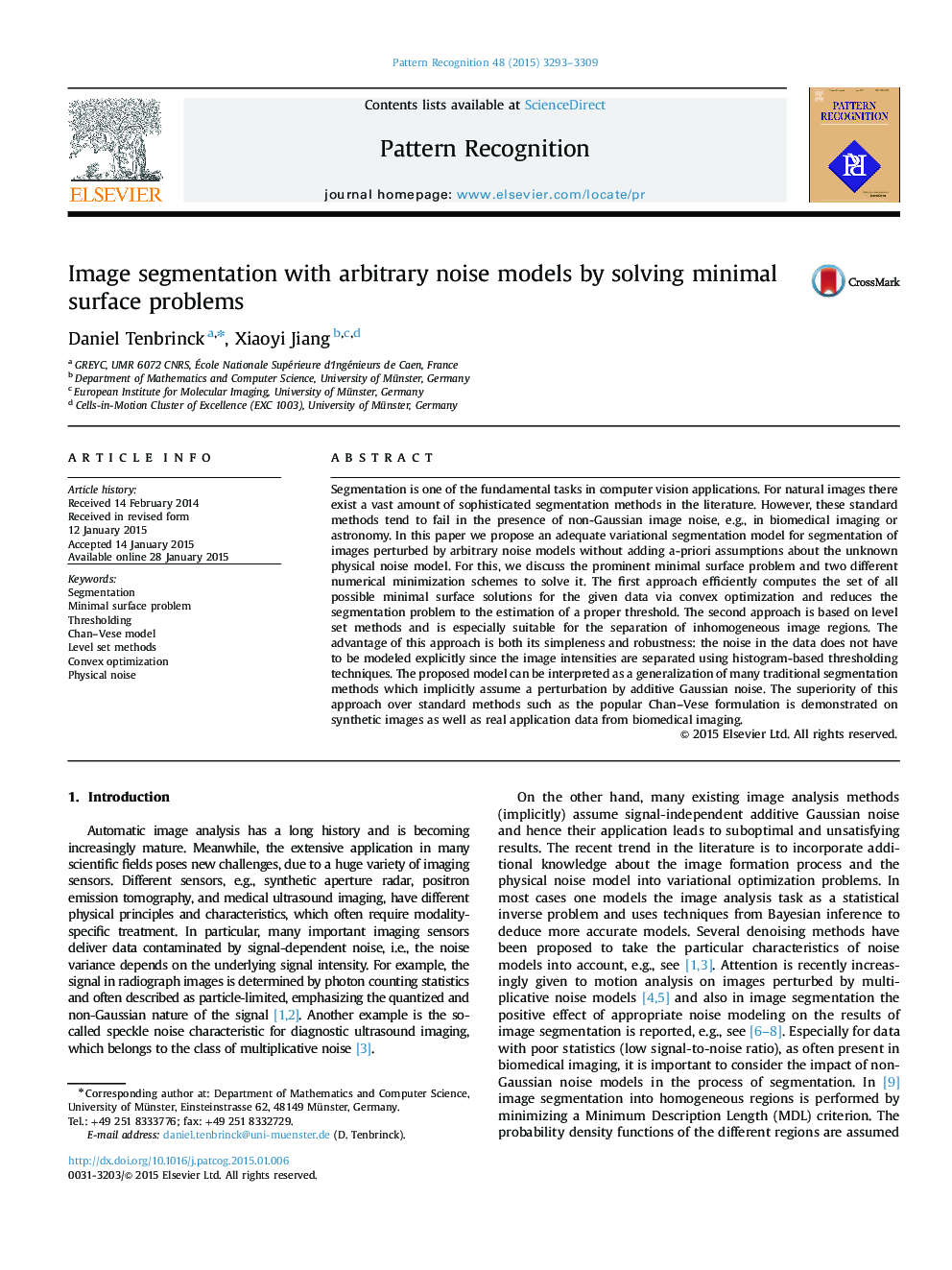| Article ID | Journal | Published Year | Pages | File Type |
|---|---|---|---|---|
| 529856 | Pattern Recognition | 2015 | 17 Pages |
•Variational segmentation formulation for images perturbed by arbitrary noise without assumptions on underlying noise model.•Efficient numerical minimization based on total variation denoising computes all minimal surface solutions at once.•Guaranteed existence of unique global minimizers and thus independence of initialization and avoidance of local minima.•Evaluation of three different histogram-based thresholding techniques.•Interactive minimal surface segmentation possible due to independence of the real-time thresholding step.
Segmentation is one of the fundamental tasks in computer vision applications. For natural images there exist a vast amount of sophisticated segmentation methods in the literature. However, these standard methods tend to fail in the presence of non-Gaussian image noise, e.g., in biomedical imaging or astronomy. In this paper we propose an adequate variational segmentation model for segmentation of images perturbed by arbitrary noise models without adding a-priori assumptions about the unknown physical noise model. For this, we discuss the prominent minimal surface problem and two different numerical minimization schemes to solve it. The first approach efficiently computes the set of all possible minimal surface solutions for the given data via convex optimization and reduces the segmentation problem to the estimation of a proper threshold. The second approach is based on level set methods and is especially suitable for the separation of inhomogeneous image regions. The advantage of this approach is both its simpleness and robustness: the noise in the data does not have to be modeled explicitly since the image intensities are separated using histogram-based thresholding techniques. The proposed model can be interpreted as a generalization of many traditional segmentation methods which implicitly assume a perturbation by additive Gaussian noise. The superiority of this approach over standard methods such as the popular Chan–Vese formulation is demonstrated on synthetic images as well as real application data from biomedical imaging.
